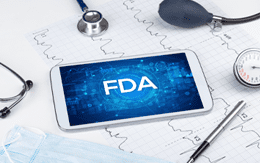Each brand team has it’s own strategy for how it should support field-driven speaker programs. Once a speaker’s bureau is built and a minimum number of programs are deemed necessary, the programs are set into motion. Year after year. For better or worse. Yet despite data for higher return on investment (ROI) for other programs, these speaker programs are rarely sacrificed in order to allocate funds to different areas of the marketing mix.
The opportunities to conduct other peer-to-peer programs abound. Funds could be allocated to successful programs such as live interactive webcasts,  virtual speaker programs, satellite broadcast events, or a host of other events that diversify the marketing mix. These programs that are led, funded, and internally directed by the marketing team, are known as marketing-driven speaker programs.
virtual speaker programs, satellite broadcast events, or a host of other events that diversify the marketing mix. These programs that are led, funded, and internally directed by the marketing team, are known as marketing-driven speaker programs.
Conducting marketing-driven speaker programs provide 6 key advantages:
1) Aligns staffing resources. Rather than having sales representatives focusing their time and energy on the details of conducting a local speaker event, the resources for these programs are centralized and driven primarily by marketing managers and the medical education vendors. Keep those sales representatives doing what they do best, and have a program in box that they can leverage with minimal effort to supplement their efforts.
2) Advances product advocacy. No matter how we look at it, local, regional, or national advocates talking about your products are only going to further drive your business. It could be argued that marketing has the authority to ensure that their top Key Opinion Leaders (KOLs) are effectively speaking at their events, rather than local events.
3) Ensures delivery of brand objectives. Content, content, content. Without delivering the right message, brands fall flat. Marketers are experts at ensuring that the most effective messages are incorporated into the programs and with marketing-driven programs, they have the most control during execution.
4) Incorporates digital channels. Live and in-person is always the best way to communicate, but digital can expand the breadth of your programs. Instead of a top KOL speaking for one group, with digital channels, all of a sudden you can reach any healthcare professional on earth. That power has it’s place.
5) Effectively controls marketing dollars. When allocating dollars to the sales organization, brand managers have very little say on who will speak, when, where, and how they will deliver the message. The most organized of sales representatives, have the most effective programs. Therefore, all of those factors play into ROI. Your dollars will be spent, under your direction, but mostly out of your control, but marketing-driven programs allow a much more controlled environment around these factors that drive costs and returns.
6) Utilizes top KOLs. KOLs have tremendous influence on prescribing due to therapeutic area fame brought on by cutting-edge clinical or scientific research, an ability to write or develop guidelines, successful articles they have written, and some have been on the stage at national scientific symposia. Their knowledge and reputations are real power and having their support behind a pharma product has proven to significantly increase ROI on speaker programs. KOL influence often leads prescribing physicians to understand who are the most appropriate patients for any given product.
Whatever your brand strategy, peer-to-peer programming is likely a part of your overall marketing mix. Think beyond traditional field-driven speaker programs, and you might be pleasantly surprised at the overall impact on prescriptions and ultimately better care for patients.





